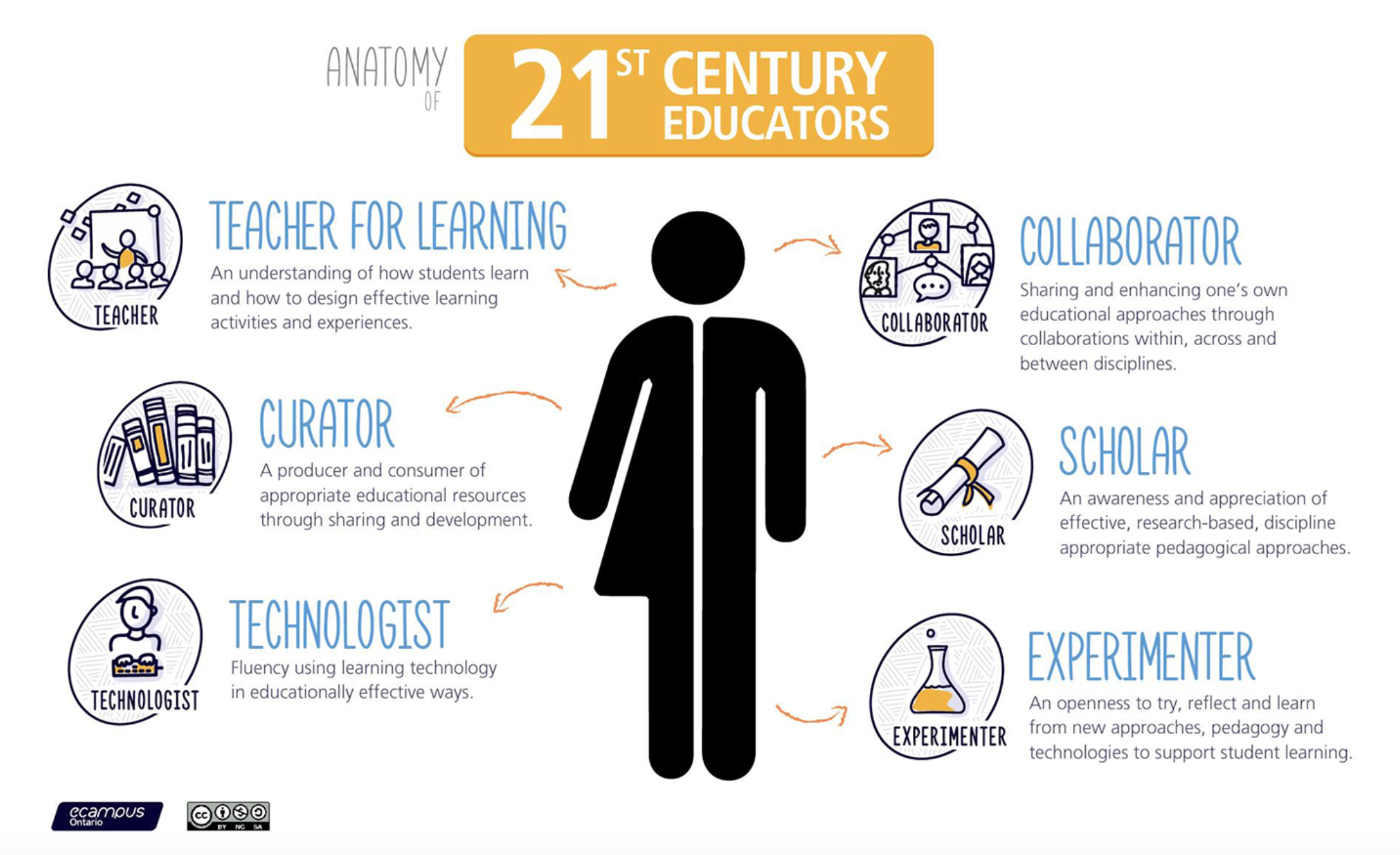Chapter 13: Supporting teachers and instructors in a digital age
13.1 Are you a super-hero?
![]()

![]()
Figure 13.1.1, developed by Simon Bates, Associate Provost, Teaching and Learning at UBC (2016), encapsulates well the role of a teacher or instructor in a digital age. At this point in the book, you might be forgiven for thinking that this is all too much, especially if you are a university professor whose passion is the discipline in which you are an expert, and whose priority is to extend the boundaries of knowledge in that subject through research or other scholarly work. Where an earth will you find the time to become expert in teaching if this means completely changing the teaching model you have become comfortable with? You are not alone in thinking this. Martha Cleveland-Innes (2013) writes:
It is unrealistic to expect higher education faculty to have sound, current, content expertise, a productive research program, an active service commitment AND be expert online teachers. The biggest lie in the academy is that the role of faculty, and its rewards and responsibilities, is made up of a seemingly balanced set of activities around teaching, research and service (Atkinson, 2001). With some variation across type of institution, research is the most valued work and most notably rewarded. While this reality has not changed “…classroom teaching and course materials (have become) more sophisticated and complex in ways that translate into new forms of faculty work. ….. such new forms are not replacing old ones, but instead are layered on top of them, making for more work.” (Rhoades, 2000, p, 38). It is time to clarify this reality and consider how, if at all, changes in teaching are, or may be, integrated into the role of faculty member.
How changes may be integrated into the role of faculty member, instructor or classroom teacher in a digital age is what this chapter is about. It is not realistic to expect all teachers to be super-heroes (even if you are the exception), but it is realistic to expect all teachers to be competent and professional in a digital age.
The good news though is that if you have read your way through all the chapters in this book, you will have done what you need to do to be competent and professional for teaching in a digital age, and will certainly be ahead of 99 per cent of your colleagues on this (at least until they have also read this book). At the same time, there is much your employing organisation and senior administrators can do to help you in this, which is the focus of the rest of this chapter.
References
Atkinson, M.P. (2001) ‘The scholarship of teaching and learning: reconceptualizing scholarship and transforming the academy’ Social Forces, Vol. 79, No. 4 (pp. 1217-1229).
Bates, S. (2016) The 21st Century Educator Burnaby BC: BCIT Faculty of Nursing Scholarship Day, May
Cleveland-Innes, M. (2013) ‘Teaching in an online community of inquiry: institutional and individual adjustment in the new higher education‘, in Akyol, Z. & Garrison, R.D. (eds.) Educational communities of inquiry: theoretical framework, research and practice, (pp. 389-400). Hershey, PA: IGI Global
Rhoades, G. (2000) ‘The changing role of faculty’ in Losco, J. and Fife, B. (eds.) Higher Education in Transition: the challenges of the new millennium Westport CT: Bergin and Garvey

